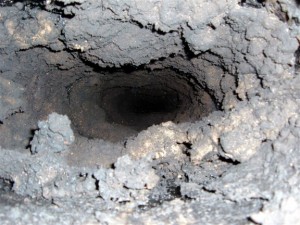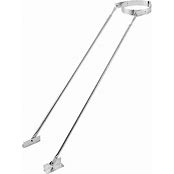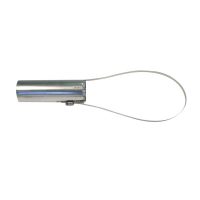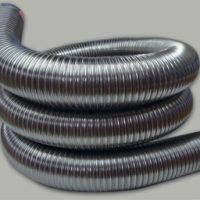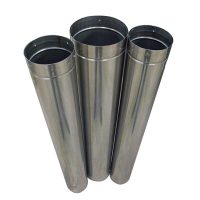If you burn wood, you probably have a dirty chimney
The burning of wood produces a by-product that builds up on the inside of the flue. This black, sticky layer that forms is highly combustible. When the creosote is 1/4″ thick, you are at a high risk of having a chimney fire. The best way to rid your flue of this thorough and regular cleanings.
Can I clean a wood burning chimney on my own?
This is not a difficult task but can be a dangerous one. Tall flues, steep roofs, long ladders and mother nature herself can make for a hazardous combination.
If your flue is in need of attention and keeping your feet planted firmly on the ground is more your cup of tea, you may want to consider contracting a sweep.
However, if you are the handy homeowner, this job of cleaning your wood stove and chimney is most likely within your capabilities.
Before you start this job remember, safety first. Always use common sense. Wear safety eye protection, gloves and a dust mask. Be sure your ladder is sturdy and long enough for your job. You never want to over extend yourself on a ladder. Always be sure to wear slip resistant footwear. Last, be sure to have the appropriate chimney cleaning tools. The less trips up and down the ladder the better.
NOTE: Be sure your cleaning brush is the correct size. A brush that is too big may become lodged in your flue.
How to Sweep a Wood stove chimney
First you want to completely extinguish the fire. Make sure the flue is cool and there are no hot ashes left in the firebox. Next be sure that your heating appliance or fireplace is sealed off properly. Use tarps to cover carpeting and furniture. Have a vacuum cleaner handy for cleanup afterward.
With your brush securely attached to your rods, lower it into the top of your flue. Add rods when necessary to reach the bottom. Work the brush up and down until the flue is clean. A flashlight will help you determine this.
Finally, vacuum up any debris that as fallen into your firebox or appliance. Be sure to check for debris behind the damper and smoke shelf area. The cleaning of the smoke shelf, the part behind the damper in the fireplace is the most important part of the cleaning. If you have a wood stove, pellet stove, fireplace insert or furnace, be sure that all connections, elbows and tees are cleaned as well.
Other methods of cleaning
Although the top down method is the preferred method among sweeps and homeowners, it can also be cleaned from the bottom up.
Unfortunately, even the most avid do-it-yourselfer may have reservations about taking that long climb to the top of the their home.
If you are that homeowner, don’t fear! You can still clean your own flue. Just simply do it from the bottom up.
The same principles apply, however, your brush will be inserted through the damper or clean out door.
Keep in mind that this method can be messy since you will be unable to seal off your opening.

